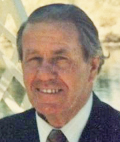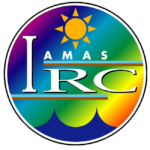
It is with sadness that we report the passing of Sean Twomey, on October 27, 2012. He was 84. Sean was born in Cork County, Ireland, on November 30, 1927. He received his B.Sc., M.Sc. and Ph.D. from the National University of Ireland. He held research appointments with the Commonwealth Scientific and Industrial Research Organization, Australia, the U.S. Weather Bureau, and the Naval Research Laboratory. Sean was a visiting professor at the University of Arizona, Department of Atmospheric Sciences, and Institute for Atmospheric Physics at various times between 1973 and 1975, followed by a full academic appointment in 1976 until his retirement in 1990. He published many papers on atmospheric radiation, aerosol and cloud physics, aerosol science, and inversion mathematics, and wrote two very influential books: Introduction to the mathematics of inversion in remote sensing and indirect measurements [Elsevier, 1977; Dover, 1996]; and Atmospheric aerosols [Elsevier, 1979].
In 1980, Professor Twomey received the highest award of the American Meteorological Society, the Carl-Gustaf Rossby Research Medal, for extensive contributions to the development of many areas of atmospheric science, including aerosol and cloud physics, radiative transfer, and remote sensing from satellites. Sean was awarded the 2004 Haagen-Smit Prize in recognition of outstanding papers published in Atmospheric Environment, for his 1974 paper, Pollution and the planetary albedo [Atmospheric Environment, 8, 1251-1256, 1974]. In a career of groundbreaking discoveries, it is this paper which may be Sean’s most enduring, for the phenomenon that now bears his name, the Twomey Effect.
The entirety of Professor Twomey’s contributions is too large to detail here. However, because of its relevance to the IRC, it is worth mentioning that Sean was one of the first to publish computational solutions to the equation of radiative transfer (now known as adding/doubling) in his paper, Matrix methods for multiple-scattering problems [J. Atmos. Sci., 23, 289-298, 1966]. At the end of the introduction he noted: “After the first draft of this paper was completed, the authors read a monograph by van de Hulst (1963) in which an operator notation was developed and applied to the multiple scattering problem. The methods described in this paper and those developed by van de Hulst are essentially equivalent.”
It will be many years before the full impact of Professors Twomey’s contributions to the atmospheric sciences is understood. But his legacy will be carried on by a generation of scientists that he influenced, from colleagues, to students, to a much greater number of scientists who never met Sean because he rarely traveled – unless there was a horse race in town. For those of us fortunate to have shared a beer with Sean, it was abundantly clear that the years were marked not by the orbit of Earth about the Sun, but by winners of the Preakness, the Melbourne Cup, and the Irish Derby, among many, many others. He will be missed.
P. Pilewskie, S. Platnick, and M. King
